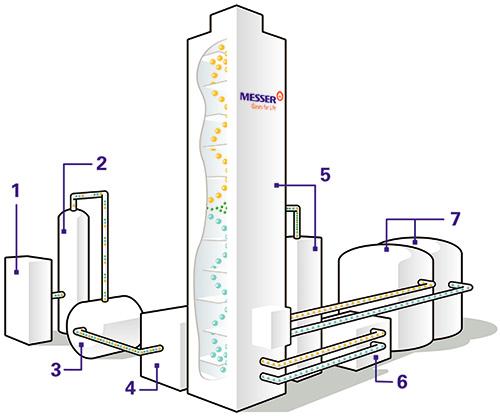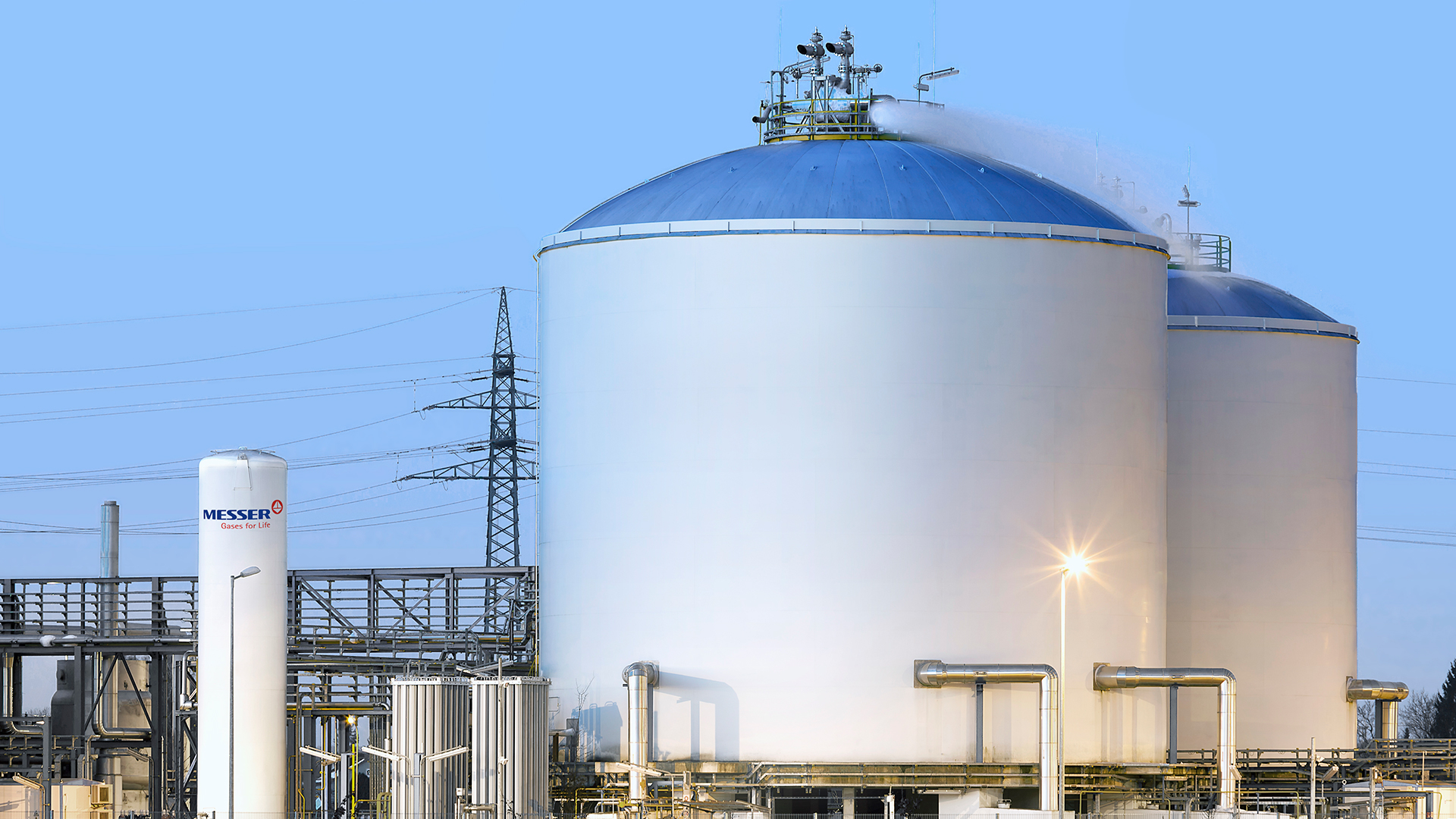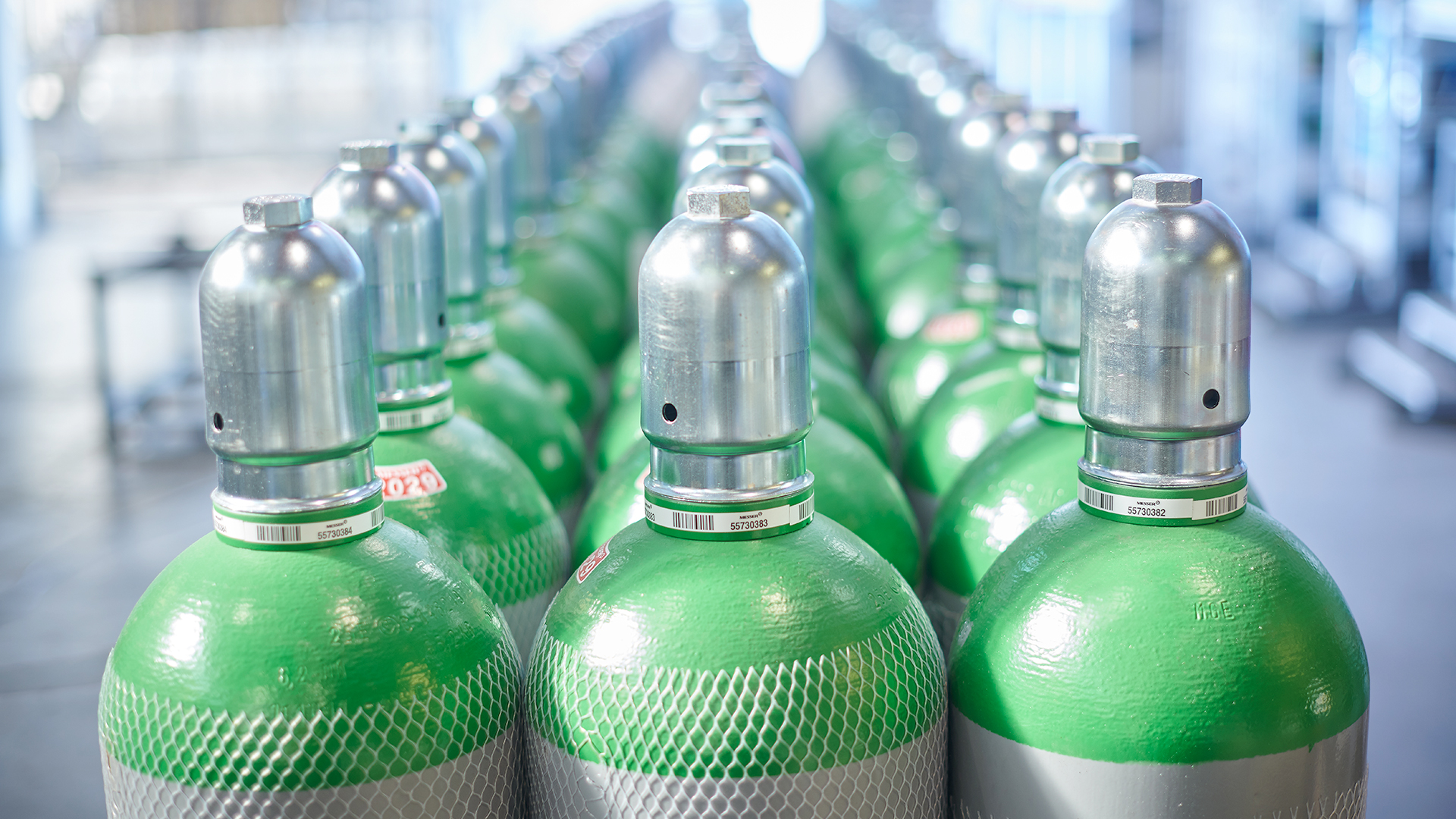What is air and what is air separation?
Air is a mixture of gases, consisting primarily of nitrogen (78 %), oxygen (21 %) and the inert gas argon (0.9 %). The remaining 0.1 % is made up mostly of carbon dioxide and the inert gases neon, helium, krypton and xenon. Air can be separated into its components by means of distillation in special units. So-called air fractionating plants employ a thermal process known as cryogenic rectification to separate the individual components from one another in order to produce high-purity nitrogen, oxygen and argon in liquid and gaseous form.

- Compression of air – Ambient air is drawn in, filtered and compressed to approx. 6 bars by a compressor.
- Precooling of air – To separate air into its components, it must first be liquefied at an extremely low temperature. As a first step, the compressed air is precooled with chilled water.
- Purification of air – Impurities such as water vapor and carbon dioxide are then removed from the air in a so-called molecular sieve.
- Cooling of air – Because the gases which make up air only liquefy at very low temperatures, the purified air in the main heat exchanger is cooled to approx. -175°C. The cooling is achieved by means of internal heat exchange, in which the flows of cold gas generated during the process cool the compressed air. Rapid reduction of the pressure then causes the compressed air to cool further, whereby it undergoes partial liquefaction. Now the air is ready for the separating column, where the actual separation takes place.
- Separation of air – Separation of air into pure oxygen and pure nitrogen is performed in two columns, the medium-pressure and the low-pressure columns. The difference in boiling point of the constituents is exploited for the separation process. Oxygen becomes a liquid at -183°C and nitrogen at -196°C. The continuous evaporation and condensation brought about by the intense exchange of matter and heat between the rising steam and the descending liquid produces pure nitrogen at the top of the low-pressure column and pure oxygen at the bottom. Argon is separated in additional columns and involves some extra steps in the process.
- Withdrawal and storage – Gaseous oxygen and nitrogen are fed into pipelines for transport to users, e.g. steelworks. In liquid form, oxygen, nitrogen and argon are stored in tanks and transported to customers by road tankers.



